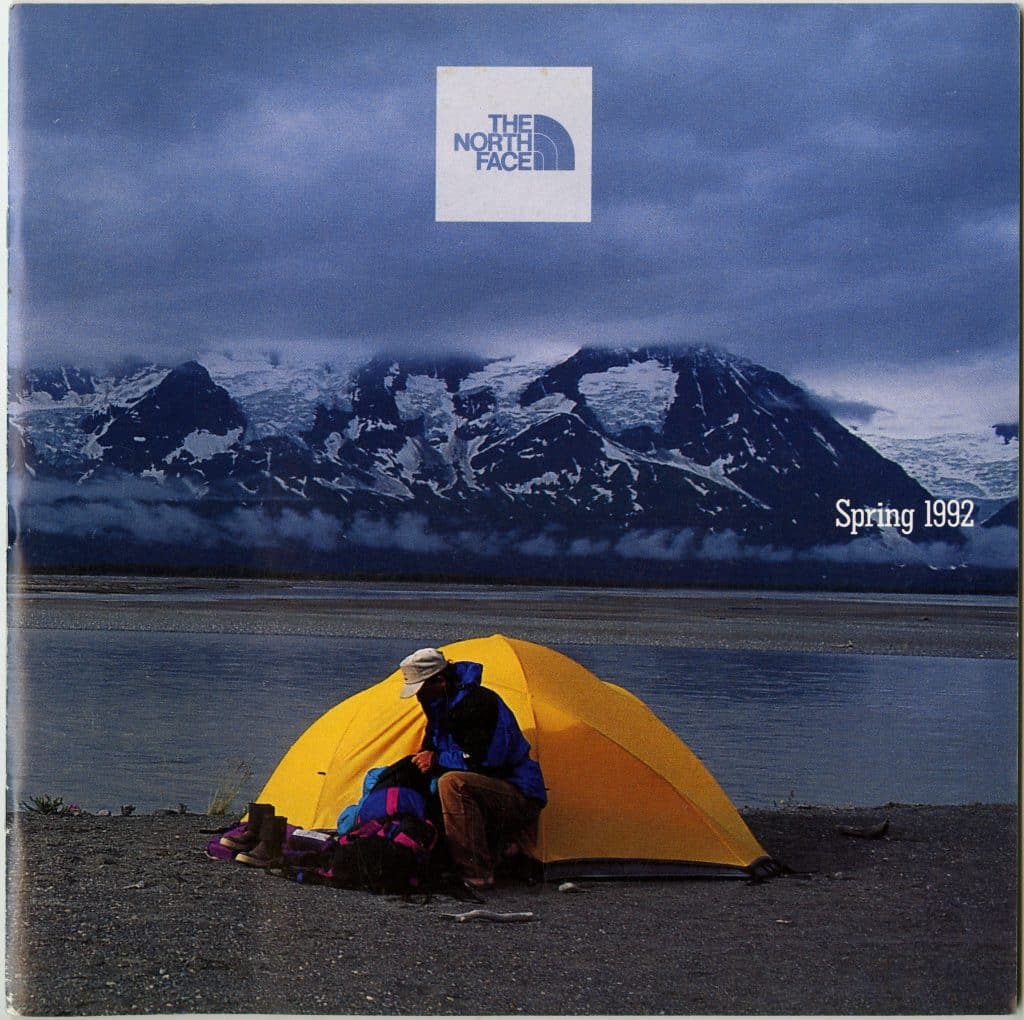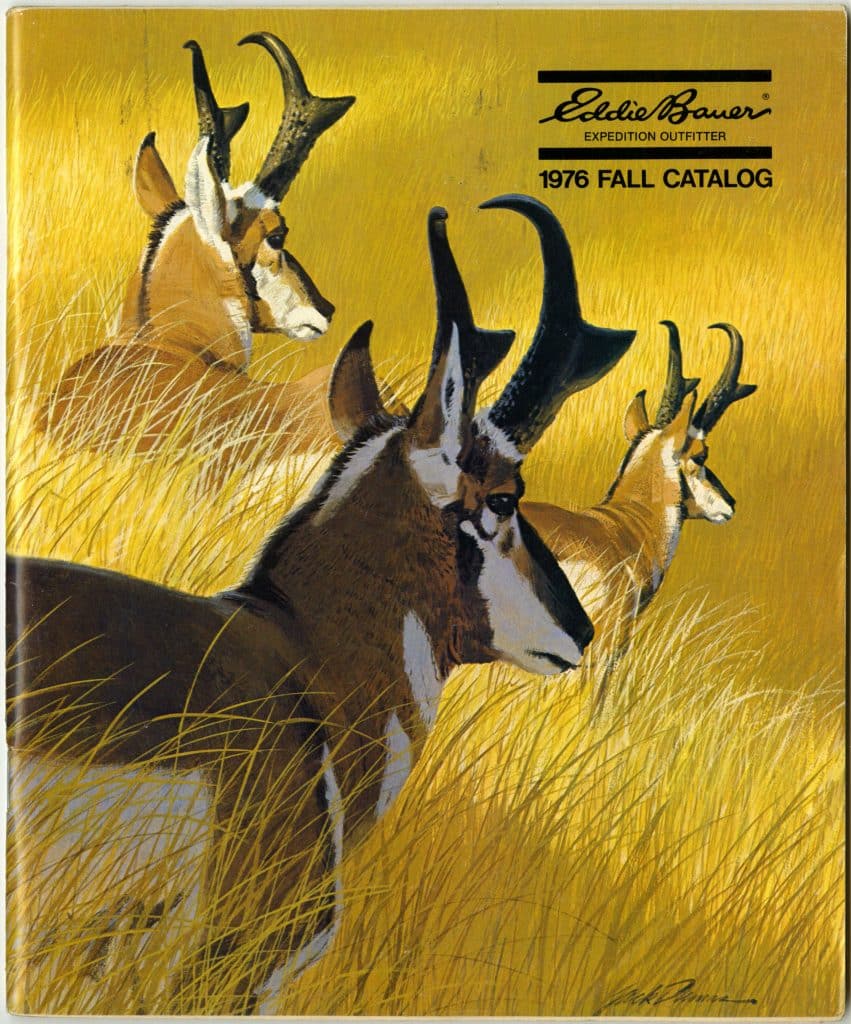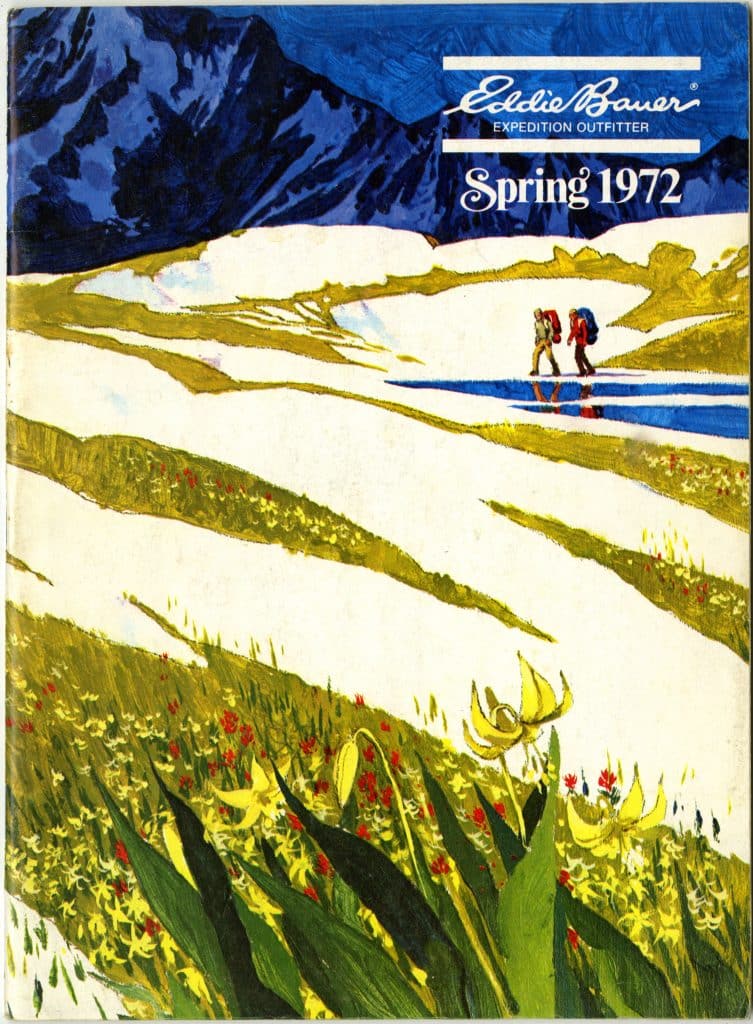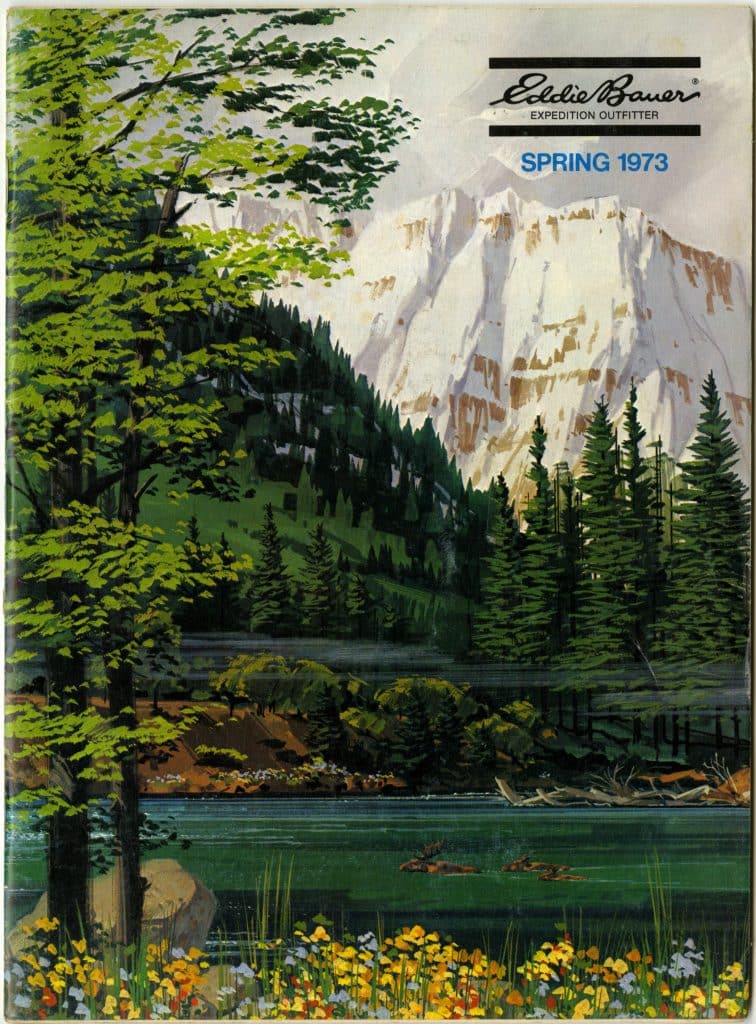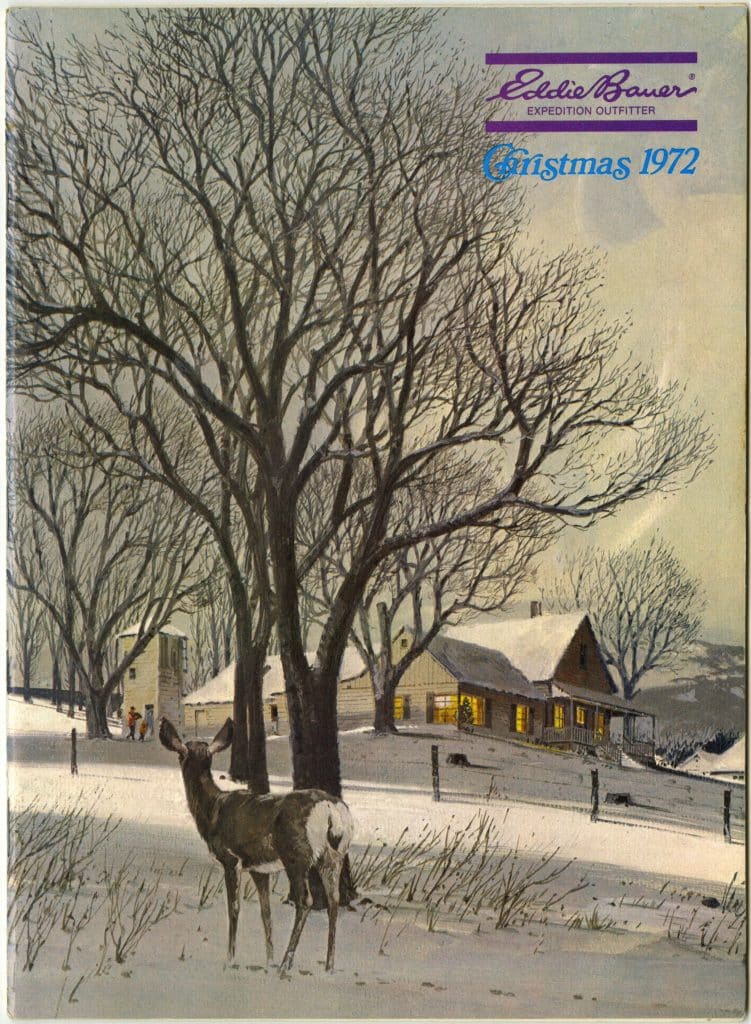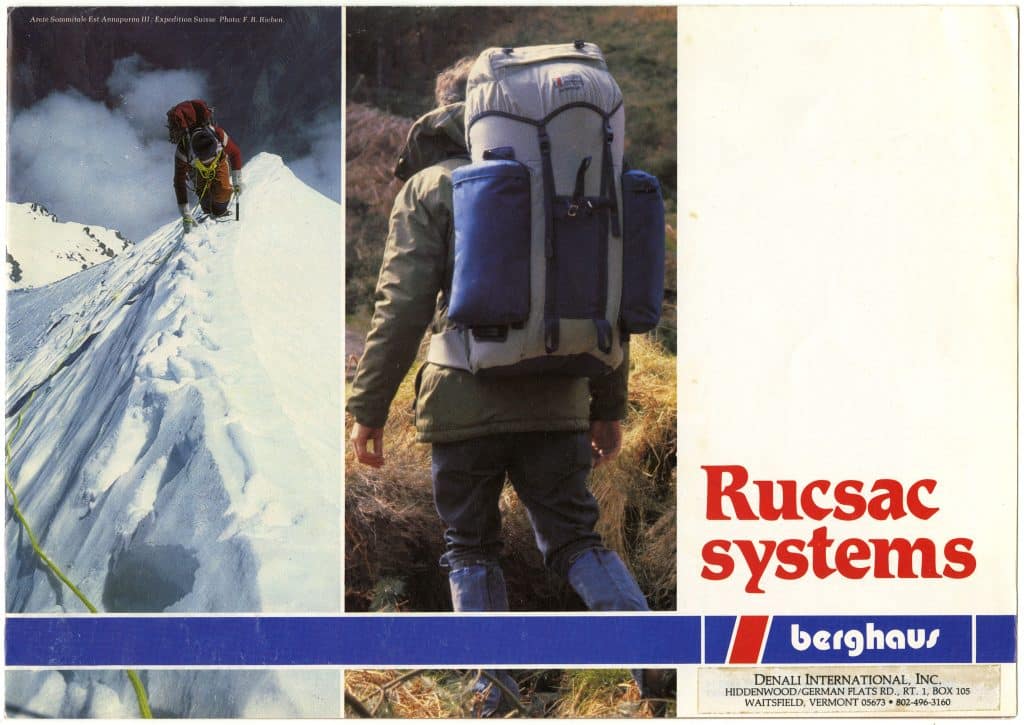
We’re sitting on a shedload of good stuff at Proper HQ and we’ve decided it’s not fair to keep it locked up from the outside world like some sort of sartorial Rapunzel. In this particular expose, we’ve let our hair down and dug out an interview from Proper 35 with the Outdoor Recreation Archive, which is primarily an archivist Instagram account dedicated to preserving the best of the outdoor world’s history. Proper 35 was released in early 2020, right on the cusp of the dreaded C-word pandemic, and the clothing world was still skirting the edge of Gorp-Dead-Bird Fever, a pandemic in itself. Now, without further ado…
Words: Neil Summers
Images: The Outdoor Recreation Archive
It’s not everyday that we discover a group of people who share our profound love for outdoor clothing, but that’s just what we did recently after stumbling across the Outdoor Recreation Archive on instagram. Which trust me, is just as good as it sounds. Put together by Chase Anderson and archivist Clint Pumphrey, the collection is housed at Utah State University library and features over 2,500 vintage catalogues and printed material from a multitude of outdoor brands. Feeling like an instagram version of Indianna Jones, I sat Chase and Clint down to find out more about the Outdoor Recreation Archive.
Neil: Hi there Chase, can you tell us a little bit about yourself and your background before we dive into the archive?
Chase: I’m the Program Coordinator for the Outdoor Product Design & Development program at Utah State University. Our program has been around for 5 years and we’ve been focused on training the next generation of product creators for sport, outdoor, and active industries. I primarily focus on industry outreach and marketing for the program. I spent some time working in marketing with brands like Cotopaxi, Altra, NordicTrack, Freemotion, and iFit.
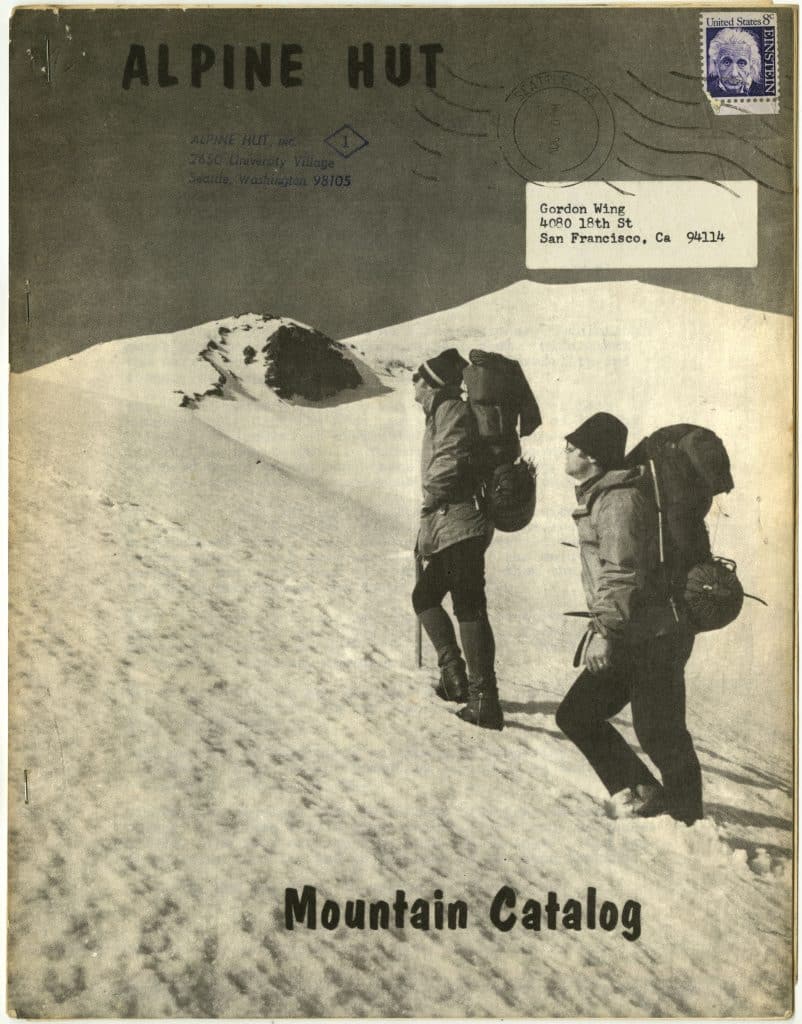
The Outdoor Recreation Archive sets out to ‘preserve the history and products of the outdoor industry’ why is this so important?
Clint: With its explosive growth over the last few decades, the outdoor industry has firmly positioned itself as a significant part of the commercial, environmental, and social fabric of the country. Their innovations have made the outdoors more accessible than ever and their activism has brought greater attention to issues from public lands and climate change. In other words, the history of the outdoor industry isn’t just about gear, it’s about how the way Americans perceive and experience the outdoors has changed over the years. The photographs, documents, and ephemera the outdoor industry has produced over the years help chronicle those changes.
Does the project just cover US brands and products?
Chase: The collection currently holds predominantly North American brands, but there are a few catalogues out of Europe, Asia, as well as Australia. We are looking to grow the collection to include outdoor brands from around the world.
Who is involved in the project and how did it come together?
Chase: Outdoor Product Design & Development and University Special Collections. One of our faculty members who is teaching a History of Outdoor Products course approached Clint Pumphrey of University Special Collections to see how they could incorporate more primary documents into the studies of students in this unique program. That kicked off a collaboration where we began approaching our industry partners and network to seek out collections of print materials. Since then, the collection now houses over 2500 items from 200 brands (with some recent items that just came in).


The ‘History of Outdoor products’ class at Utah State University sounds particularly amazing. What do the lessons cover exactly? And can we attend!?
Chase: The course description for the course is below! Maybe there’s an opportunity to come audit ha!
“This course examines the historical progression of outdoor products, including apparel, tools, and other equipment. Investigations include the context of the industry’s past to present while considering the environment, ethics, consumer behavior, and the change in product design. “
I believe there’s over 2,500 items from 200 different brands in the special collections and archive area. What exactly does the collection consist of and which are the most cherished items?
Chase: The collection has primarily consisted of catalogues and magazines from outdoor brands old and new, still in existence and brands long gone. We are looking to expand the collection (in addition to working to complete runs of catalogues and magazines), to include print materials of all kinds including company correspondence, product sketches, corporate documents, significant photos, etc.
I really love some, like the 1909 Abercrombie and Fitch catalogue which Clint acquired for the collection, as well as the early Chouinards, LL Beans, Eddie Bauers, and Sierra Designs. Each cover is an absolute work of art. There is such love and care put into each one.
Clint: Here’s a little canned text about what we have and where we’re hoping to take the archive: To date, our collection consists of more than 2,000 outdoor product catalogues dating from the early 1900s to the early 2000s, published by dozens of outdoor gear fabricators and retailers from Chouinard and Sierra Designs to L.L. Bean and Abercrombie & Fitch. Some catalogue runs are more complete than others, so we would be interested in speaking with anyone who has this type of material and might be willing to contribute issues to our collection. We hope to supplement these published materials with personal and business records from outdoor product manufacturers, retailers, and notable outdoor enthusiasts. These materials may include correspondence, field journals, reports, photographs and other unpublished items.
Finally, we are also interested in collecting outdoor recreation guides (i.e. climbing, hiking, mountain biking, river running etc.), particularly those that relate to the Idaho, Montana, Nevada, Wyoming, Utah, and western Colorado region.
I also really like the 1909 Abercrombie and Fitch catalogue mentioned above. I think it was their first catalogue – somewhere around 400 pages – and has a lot of narrative text, which is unusual for a catalogue from that era. Plus, people nowadays mainly remember Abercrombie and Fitch for their racy catalogues of the 1990s and 2000s, and forget they were one of the biggest outdoor gear companies of the early 20th century. I also recently purchased a 1960 catalogue from a company called Cacique Camping based in Argentina. I don’t really know anything else about them, but it’s an interesting insight into the global origins of the industry.
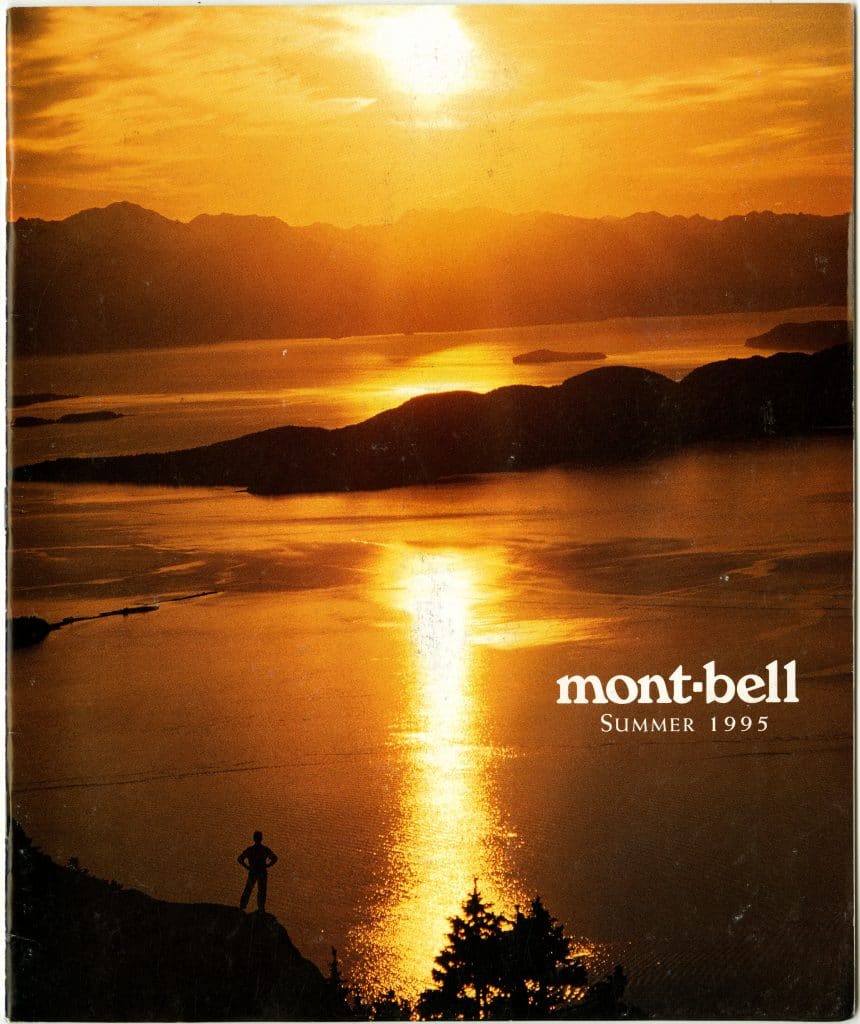
What have you learned/discovered from your involvement with the project?
Chase: I’ve recently been posting the collection daily on our @outdoorrecarchive Instagram account and I’ve learned how loved these catalogues are among so many, not just those in the outdoor industry. I’ve had people from all industries connect with us with a genuine love and interest in the collection to the point that many have expressed interest in traveling to the university to experience the entire collection in person.
Which brands are you the fondest of and why?
Chase: In addition to the ones that I shared above, I’ve loved discovering smaller brands that still have a lasting impact including companies like Rivendell Mountain Works, Early Winters, the Yak Works, and Frostline Kits.
Where do you get all these incredible items from?
Chase: A lot of them come from long time outdoor enthusiasts and collectors, company founders, designers, brands, and ebay!
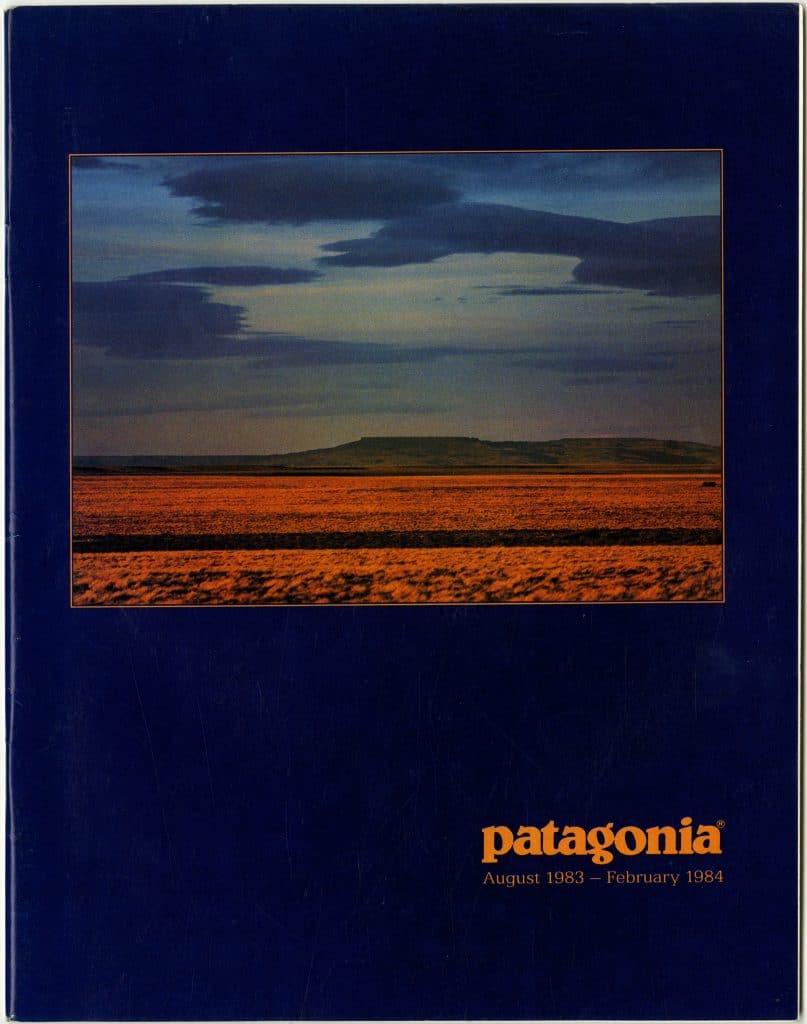
If we came over would we be able to have a look around?
Chase: In normal circumstances (post COVID), the collection is public. People can come and work with the archives team to bring out items from the collection to look at.
Are there any items/brands you need some input from? How can people get in touch?
Chase: We are always looking to complete runs of catalogues, and we are always looking for materials from the early days of companies, sketches, company correspondence, journals, etc.
Are there any plans for a book?
Chase: Nothing right now.
Proper’s clothing brand Hikerdelic is hugely inspired by vintage American outdoor brands as are several other modern menswear labels, why do you think these old school, outdoor labels have such a resonance with modern tastes?
Chase: There’s something so authentic and in some ways, analog about what these brands did. Especially in the cases of the hand painted catalogues, you can feel the craftsmanship and care. That’s tangible. You can’t beat something that was made with love and care.
How can we find out more about the Outdoor Recreation Archive?
Chase: The entire collection can be viewed on the website and you can keep up with daily catalogues posts on our Instagram, @outdoorrecarchive.
All images featured are courtesy of the Outdoor Recreation Archive.
